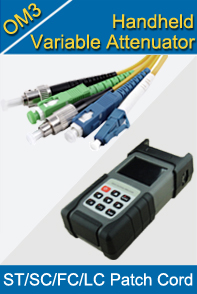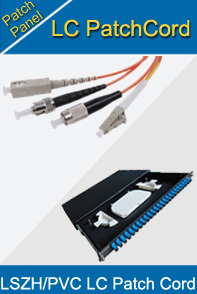-

- Sopto Home
-

- Special Topic
-

- Patch Cord Knowledge
-

- A Clear Understanding of Fiber Pigtail and Patch Cord
Patch Cord Knowledge
- Fiber Optic Connector Ferrule Design
- Fiber Optic Connector Design
- E2000 to ST Fiber Patch Cable Overview
- Acceptable and Unacceptable Fiber Connector End-Face Finishes
- Using Wipes and Cleaning Cassettes to Clean Fiber Patch Cords
- Not-Too-Tight Mating of Fiber Optic Connectors
- Matching Gel and Oils Contamination about Fiber Optic Connectors
- The Effect of Improper Use of Fiber Optic Connectors
- Why Fiber Optic Connectors are Fragile?
SOPTO Special Topic
Certificate



Guarantee
Except products belongs to Bargain Shop section, all products are warranted by SOPTO only to purchasers for resale or for use in business or original equipment manufacturer, against defects in workmanship or materials under normal use (consumables, normal tear and wear excluded) for one year after date of purchase from SOPTO, unless otherwise stated...
Return Policies
Defective products will be accepted for exchange, at our discretion, within 14 days from receipt. Buyer might be requested to return the defective products to SOPTO for verification or authorized service location, as SOPTO designated, shipping costs prepaid. .....
Applications
 Fiber Patch Cords have a widely application. Where the need for the optical fiber connection, where you need fiber optic patch cords.
Fiber Patch Cords have a widely application. Where the need for the optical fiber connection, where you need fiber optic patch cords.
Testing Equipment
FTTX+ LAN
Optical Fiber CATV
Optical Communication System
Telecommunication
SOPTO Products
- Fiber Optic Transceiver Module
- High Speed Cable
- Fiber Optical Cable
- Fiber Optical Patch Cords
- Splitter CWDM DWDM
- PON Solution
- FTTH Box ODF Closure
- PCI-E Network Card
- Network Cables
- Fiber Optical Adapter
- Fiber Optical Attenuator
- Fiber Media Converter
- PDH Multiplexers
- Protocol Converter
- Digital Video Multiplexer
- Fiber Optical Tools
- Compatible
Related Products
Performance Feature
Good Water-proof
Low insertion loss;
low reflection loss;
Stability, good repeatability;
High-precision ceramic ferrule;
Compatible with NTT standard;
Precision Grinding and fully testing;
Compliance with international standards
Patch Cord Knowledge
Recommended


A Clear Understanding of Fiber Pigtail and Patch Cord
Previously, I only know different in appearance of the fiber pigtail and patch cord. The fiber optic patch cord = fiber optic connectors + fiber optic cable + fiber optic connector. But the fiber optic pigtail = fiber optic connector + fiber optic cable. I think like this is easy to separate between them.
Recently, I have read a discussion about the difference between fiber pigtails and patch cords. There are so many professi0nal people to discuss it. They give me a clear understanding that:
Patch cords are made from either single or multi-fiber cables (usually rated for indoor use) and connected at each end with fiber cable connectors (either single fiber or multiple-fiber connector). Sometimes patch cords are called jumpers, especially if they are simplex or duplex. The connectors are selected to mate with the interfacing equipment or cable connectors.
The important idea is that the cable has a connector at each end. The fiber can be either tight or loose buffered and the cable can be made of various diameters (1.2 mm to 3.0 mm are common). The patch cord may have one type of connector (ST FC, SC, LC, etc.) on one end and a different connector on the other as long as all the fibers are connectorized on each cable end - this is a transition jumper.
Patch cords are commonly used to connect ports on fiber distribution frames (FDFs). The new MPO connecter makes it possible to run a single cable that automatically terminates 12 fibers in one easy plug in.
Compared to common patch cord with ST FC, SC and LC connectors, MPO cable is a truly innovative and amazing group of products that really takes fiber optics into the new millennium.
A pigtail is a cable (like a patch cord or jumper) with only one end terminated with an optical connector. Patch cords are often cut into shorter lengths to make two pigtails. Pigtails are found anywhere, but more commonly in optical assemblages or optical components.
Pigtails are installed where they will be protected and spliced, let’s say on the inside of the ODF and that's why they are normally not sheathed. They have a coating color so that you slice them on the corresponding color on the out coming fiber.
On the other hand patch codes are used between the ODF to the WDM MUX or equipment. If you cut a patch code for use as pigtail then in case of future faulting where you are dealing with multiple pairs it will be difficult. But still if you need to cut the patch code check on its characteristics.
In general, the only major physical difference between patch cord & pigtail is that patch cord is a fixed length piece of cable with dual ended fiber connector type may vary & pigtail is one meter standard OFC core with white colored jacket. As per standard pigtail can only be used for OFC termination purpose & patch cord is to be used to connect the active component with ODF so that means pigtail can’t be used at the place of patch cord.
As the professional fiber optic patch cables provider, we supply a range of optical patch cord, such as LC fiber cable, ST fiber cable, MTP MPO cable, LC SC patch cord and more. If you would like to purchase our optical patch cables, please contact a Sopto representative by calling 86-755-36946668, or by sending an email to info@sopto.com. For more info, please browse our website.




